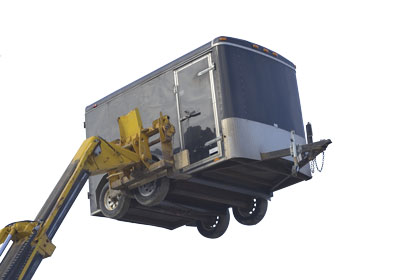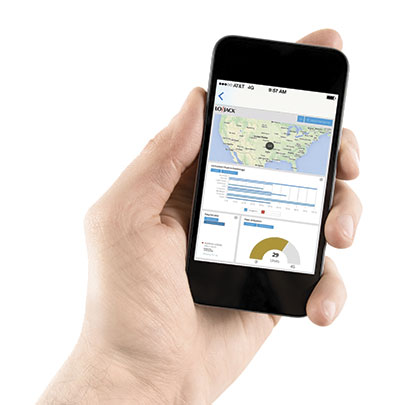You won the contract.
Short-term, long-term, small-scope, large: a new job is a win, a sign of confidence from your industry, a potential avenue for repeat business—and crucial referrals. It may keep your crew working during the slow season, gain a foothold for your business in a new market, pay down interest-heavy debt, and provide capital for a new investment.
The potential for gain is enormous—and so is the new business risk.
The intensely competitive bidding process sometimes found in the construction industry can lead to jobs on which the margin for error hovers uncomfortably close to zero. Competing bids force proposal rewrites, which are often centered on cuts to original profit margins and timetables, and expansions to job parameters and deliverables. Each change comes with difficult questions: Will I have to rent equipment now? Do I need to expand my crew? Will I need to sub-contract the work for the expansions to the project scope? One of the hardest questions construction business leaders can ask themselves may also be one that comes up the most frequently: Can I deliver?
Credibility equals business, and when delivering on time and on budget requires near-flawless execution, establishing control over your risk factors is paramount to successfully completing this job, and landing the next. But with increasingly complex projects, staffing each construction project at the level necessary for achieving real, measurable risk reduction is unsustainably cost-prohibitive.
Fortunately, investment in technologies to bridge that gap has been significant, resulting in a buyer’s market for the asset management tools needed to optimize and protect your fleet investment. Telematics tools, in particular, are leading the way to cost-efficient fleet management.

EVOLUTION OF JOBSITE DYNAMICS
As contained, single-location construction sites increasingly give way to multi-acre, multi-location projects, the ability to locate equipment immediately is critical. Events as common as crew changes and simple miscommunications can result in a misplaced machine, and even a single manual equipment search can result in unsustainable cost increases due to project delays and inefficient utilization of personnel.
Many companies providing telematics-based asset management services offer an equipment location feature. With LoJack® Connect for Equipment, for instance, you can access real-time equipment locations through a Google map interface on any smartphone, tablet, or desktop computer. There are a variety of GPS-location options on the market, and you should research to find the one that best fits your business needs.
PROTECTING YOUR INVESTMENT
The consequences of inadvertently misplacing a machine are multiplied a hundredfold when equipment is purposefully relocated for unscheduled—and often unauthorized—work. Knowing how long a machine has been working enables consistent utilization tracking. When equipment has been appropriated for unscheduled work, you immediately lose accurate historical tracking and the ability to perform critical maintenance on schedule. Project delays caused by unnecessary equipment hunts certainly impact timelines and bottom lines, but the complete loss of machinery to catastrophic mechanical failure can sink a job or a business.
One strong tool for preventing unauthorized equipment relocation is geo-fencing, a feature offered by high-quality equipment management systems. You or someone you authorize can use software to set up boundary zones for each piece of equipment. Geo-fences are set up remotely, and because they’re electronically-based, are undetectable on the ground. Most geo-fencing technology has multiple options for user alerts, so you can choose how you want to be notified when your machinery takes an unexpected trip out-of-bounds.

MANAGE CONSTRUCTION THEFT
Strategies for reducing theft risk nearly always focus on prevention. Without question, reducing your vulnerability is a crucial step, but in a comprehensive risk reduction strategy, it is never the only step. Construction equipment, with its universal keys, lack of VINs, often-easy access, and high resale potential, offers a particularly lucrative target. Theft can happen nearly anywhere. So let’s start there.
Investing in a telematics tool with a geo-fencing feature means equipping yourself with an early-warning system that will reduce the window between the time a theft takes places, and the time it’s detected, minimizing the distance your equipment can travel before you realize it’s gone.
One day, you get the alert. You call your foreman; no, he didn’t authorize overtime. Someone has taken your equipment outside your geo-fence: stolen it. It’s time for law enforcement to take over, but you can still increase the probability of a successful recovery by having an equipment recovery system installed in addition to your telematics tools.
Forging and maintaining a strong connection with your fleet is a crucial step in creating effective, cost-efficient risk-reduction strategies for your business—and telematics-based solutions are becoming fundamentally important tools in that process. ■
For More Information: Courtney DeMilio is national vice president of construction and fleet with LoJack Corporation. For more information, visit www.lojack.com/connecteq.
_________________________________________________________________________
Modern Contractor Solutions, September 2015
Did you enjoy this article?
Subscribe to the FREE Digital Edition of Modern Contractor Solutions magazine.

Contractor, Fleet, Telematics


